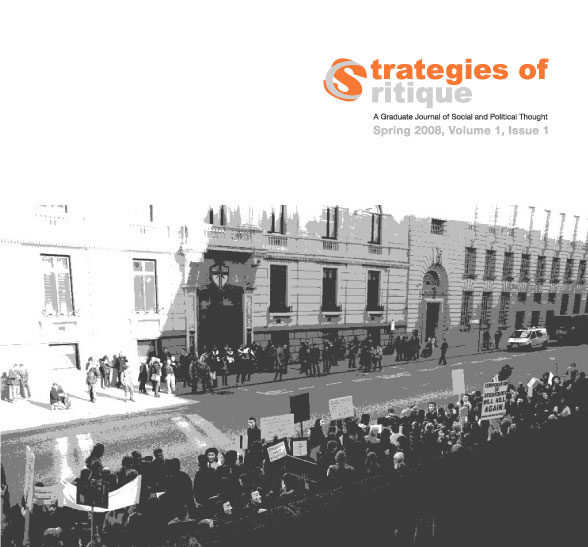This is an outdated version published on 2008-04-24. Read the most recent version.
Adorno’s Thought-Image of Kierkegaard
DOI:
https://doi.org/10.25071/1916-7210.15367Abstract
In his recent work, Thought-Images: Frankfurt School Writer’s Reflections from Damaged Life, Gerhard Richter contends that it is the insight into the aesthetic dimensionality of truth that is the unifying principle holding together the diversity of approaches characteristic of the Frankfurt School thinkers. In this paper, Clifford Lee offers three passages from Kierkegaard’s writing as examples of the type of writing Richter describes as thought-images. These aesthetic constructions are shown to be suggestive of the tense relation Kierkegaard’s thought bears to the idealism it seeks to escape and to serve as illustrations of how this relation plays itself out in the work his writing requires of its reader. Offering Adorno’s first published work, Kierkegaard: Construction of the Aesthetic, as an attempt to construct a thought-image of Kierkegaard, Lee argues for a reciprocity in this project that an understanding of Kierkegaard’s thought-images would grant us an understanding of Adorno’s project that acknowledges the challenge placed upon his readers by the irreducibility of its aesthetic component.Downloads
Published
2008-04-24
Versions
- 2008-04-24 (2)
- 2008-04-24 (1)
How to Cite
Lee, C. (2008). Adorno’s Thought-Image of Kierkegaard. Strategies of Critique, 1(1). https://doi.org/10.25071/1916-7210.15367


